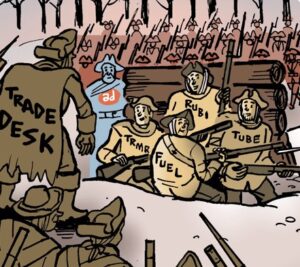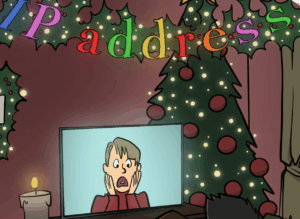Many AI tools currently on the market fall into one of two camps: Either they’re used analyzing and making decisions based on large amounts of data, or they quickly generate creative content, such as ad copy and stock images.
AdCreative.ai, however, wants to do both.
Founded in 2021, AdCreative.ai’s stated mission is to “give advertisers better conversion rates and way faster asset production speed,” said CEO Tufan Gok.
On Monday, the startup announced a new product called AdLLM Spark, which generates what Gok calls “high conversion-rate ad texts,” but also predicts how the creative will eventually perform.
AdCreative.ai was part of Nvidia’s Inception incubator program and has also worked directly with several executive advisors within Google.
Feeding the machine
Early versions of the platform, which was initially built on the ChatGPT framework, analyzed content and performance data taken from online ad accounts.
At the time, customers – the company works primarily with small and medium-size businesses – integrated their ad accounts directly with AdCreative.ai, and somewhere between half an hour to two hours later, the platform delivered ad text based on the brand’s existing tone.
As AdCreative.ai’s user base grew to include larger business and enterprise clients, the company pivoted from its original ChatGPT structure to an in-house, open-source LLM.
Over time, results mirrored well-known copywriting best practices, such as, for example, grabbing a reader’s attention by asking a direct question.
How did this happen? It’s unclear even to the AdCreative.ai team.
“Large language models are also a bit of a black box,” Gok said. “Even the guys who build the fundamental models, they don’t know how things work inside.”
But since AdLLM Spark was trained on data from over two million AdCreative.ai customers who’ve used the product across 192 countries, it no longer requires the same amount of information from new users to deliver accurate results quickly, he said.
In addition to generating ad text (the kind a “senior copywriter would create,” according to Gok), AdLLM also uses a custom benchmark to predict performance metrics, such as click-through rates for autogenerated text.
Gok said that one beta tester – a dental provider in Miami, Florida, who is emblematic of the AdCreative.ai user base – found that AdLLM-generated ad text was remarkably similar to its previous ad content and didn’t take “days of brainstorming and a lot of people collaborating on Google Docs” to produce.
The overall pool of 4,000 beta testers for AdLLM Spark saw a 48% increase in click-through rate with the new product, and Gok said he hopes to see even more promising results now that the tool is live.
The future of AI
There are still plenty of kinks to work out, though.
While the company now boasts enterprise clients like Snapchat and Starbucks, the bulk of its user base is small business owners, many of whom frequently complain about issues with automatic billing after their 7-day free trial runs out.
This quarter, the support team has tripled in size to better address these concerns. “Building a world-class support as a super-high-growth startup is as hard as the tech we build, if not harder,” Gok said.
Beyond AI-generated ad copy, AdCreative.ai is working on other tools for creating easily editable ads using vector art and Stable Diffusion-generated stock images. According to Gok, the platform can already scan the images it trains on and the outputs to flag any content that could have a potential trademark infringement. The company is also working on a text-to-video machine powered by OpenAI’s Sora.
Meanwhile, it’s improving AdLLM Spark’s translation skills. Today, the tool can generate tests in over 30 different languages, but with mixed results beyond English and French.
What will all this mean for the creative workers – copywriters, graphic designers, photographers, video editors, et al. – whose job it is (or was) to make this content?
Gok didn’t mince words: “Do I think that some people may lose their jobs? Absolutely. But I think that happens with any groundbreaking technology, and AI is one of them.”
He also made the usual argument that AI-generated tools will ultimately save those workers time and money, citing a client that uses AdCreative.ai-generated stock images to A/B test concepts before doing an expensive real-life shoot.
“I think AI is absolutely the future,” Gok said. “And I am quite confident that there won’t be a single business that’s not going to use AI somewhere – probably in a year or two at the latest.”














